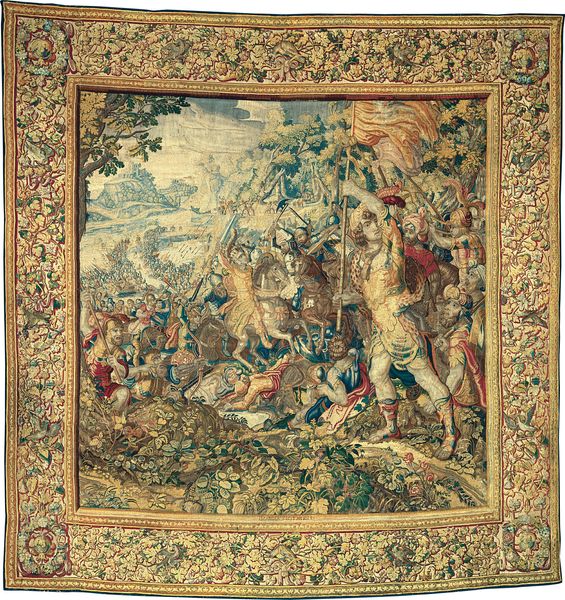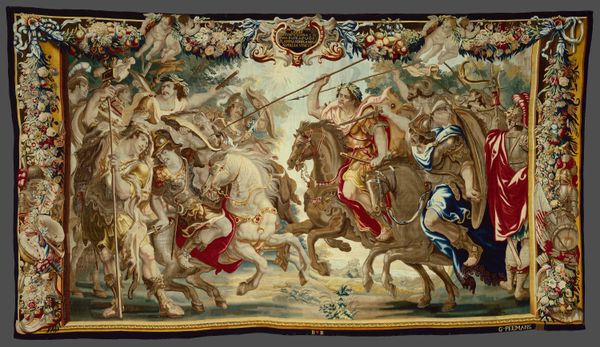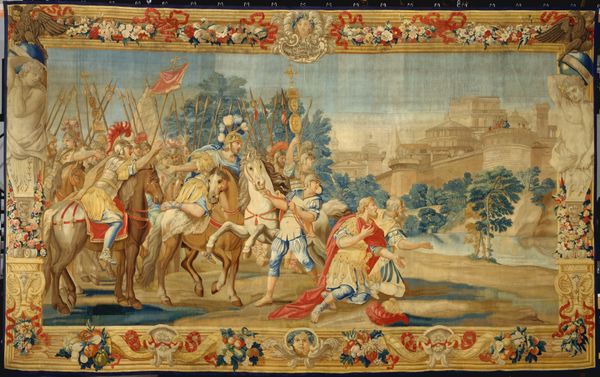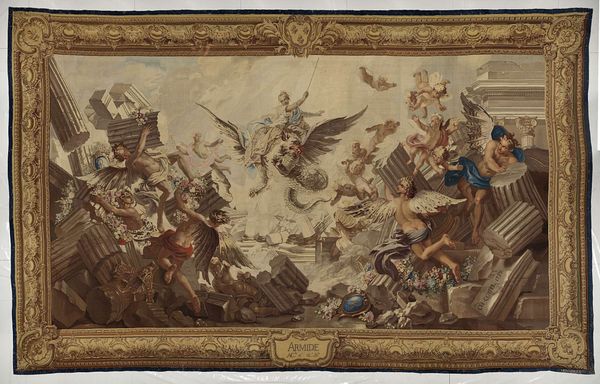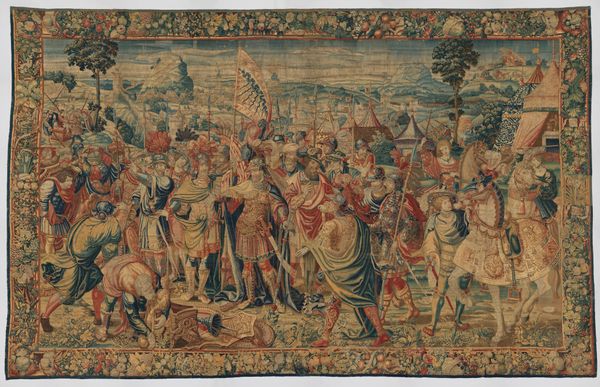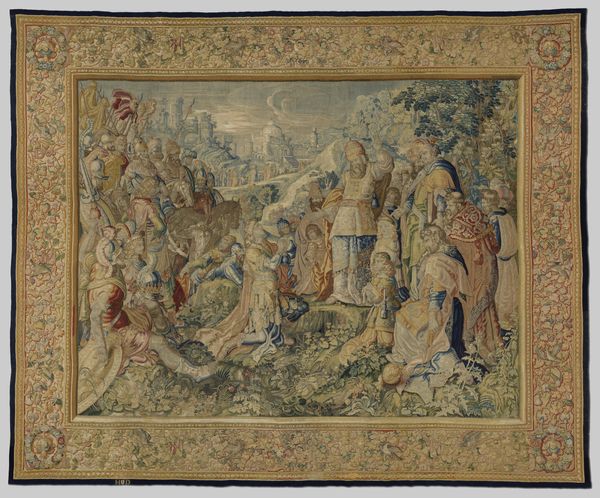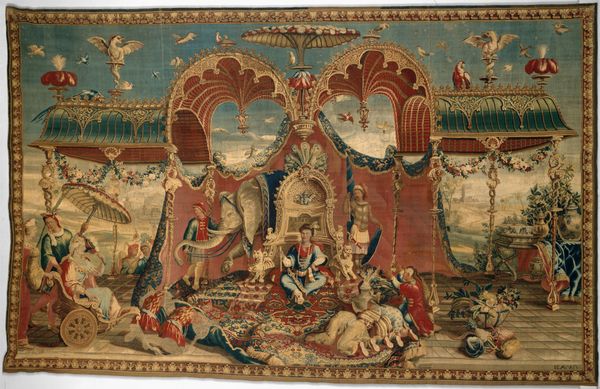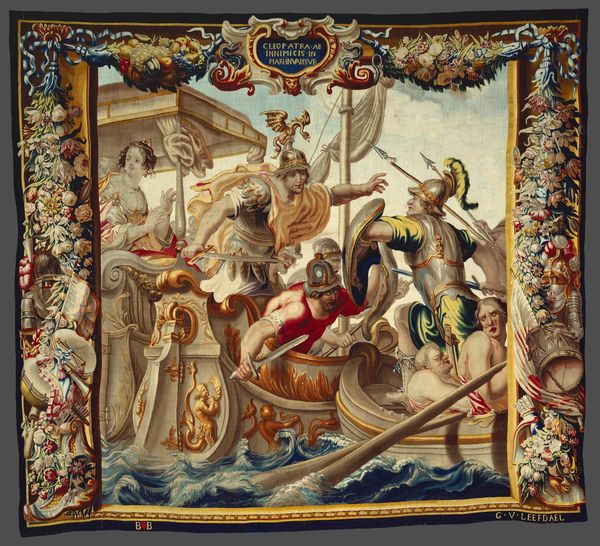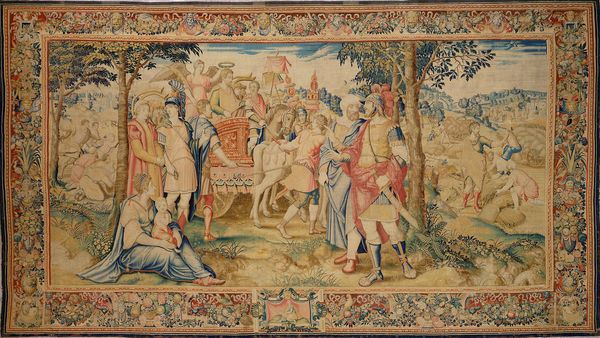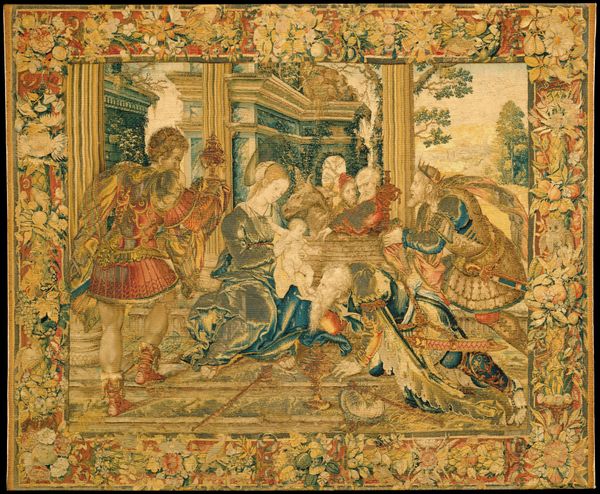
The Massacre at Jerusalem, from The Story of Titus and Vespasian 1650 - 1675
0:00
0:00
textile
#
narrative-art
#
baroque
#
textile
#
figuration
#
mural art
#
history-painting
Dimensions: 514 × 367.7 cm (202 3/8 × 144 3/4 in.)
Copyright: Public Domain
Editor: Here we have Geraert Peemans’ tapestry, “The Massacre at Jerusalem, from The Story of Titus and Vespasian,” created sometime between 1650 and 1675. It’s incredibly detailed and unsettling. What do you see in this piece, especially considering it's rendered in textile? Curator: Tapestries such as these were never just decorations; they served as potent cultural artifacts. Woven into this image is the long-held cultural memory of conflict, rendered in thread. Note how the figures are positioned—can you see the echoes of earlier battle scenes in paintings and engravings? These visual tropes carried significant emotional weight. Editor: I see what you mean about echoes of past scenes. It does remind me of history paintings. Curator: Precisely. And it isn't simply about recording an event. Look closely at the way Peemans depicts the soldiers versus the civilians. Notice any difference in their treatment? Editor: The soldiers are much more idealized, heroic even, while the civilians seem to be in total disarray and suffering. Curator: Yes! That dichotomy is key. Peemans is engaging with a pre-existing visual language, reinforcing specific power dynamics and cultural values. Consider the symbolic function of the classical architecture. The ruins of Jerusalem not only indicate historical narrative but signify a transition of power from one civilization to another. This tapestry acted as more than decoration: it participated in the cultural discourse of power and legacy. What does the transformation of a historical event into art achieve? Editor: I suppose it turns it into a message, something that continues to shape understanding, even now. It's fascinating how much history and cultural meaning can be woven into something like a tapestry. Curator: Indeed. And it's a reminder that even the most decorative objects can carry profound cultural weight. I came to learn to view the history painting with fresh eyes.
Comments
No comments
Be the first to comment and join the conversation on the ultimate creative platform.
